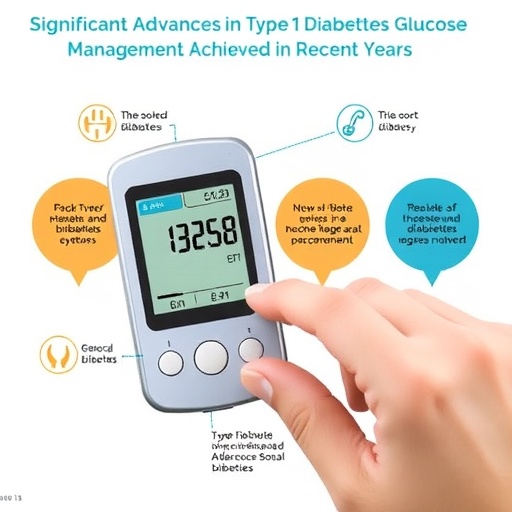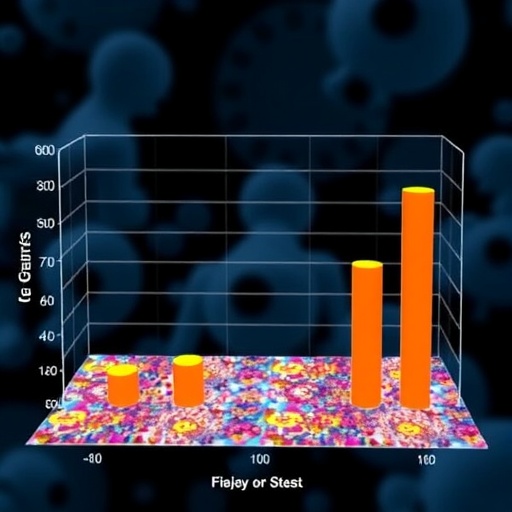Over the past decade and a half, a transformative shift has emerged in the management of type 1 diabetes, driven primarily by the burgeoning adoption of advanced continuous glucose monitoring (CGM) and insulin delivery technologies. A recent large-scale study conducted by researchers at the Johns Hopkins Bloomberg School of Public Health meticulously charts this evolution, analyzing nearly two hundred thousand individuals diagnosed with type 1 diabetes across the United States. By scrutinizing health data spanning from 2009 to 2023, the study reveals extraordinary advancements not only in the uptake of diabetes management devices but also in the critical benchmarks of glycemic control among both youth and adult populations.
The investigative team leveraged a vast national database comprising de-identified electronic health records to capture and analyze longitudinal trends in device use, encompassing continuous glucose monitors and insulin pumps. These devices represent a paradigm shift, offering patients real-time feedback on blood glucose levels and improved insulin delivery mechanisms tailored to physiological needs, thereby enhancing the precision of diabetes self-management. Over five distinct three-year intervals, the study examined patterns of device adoption alongside hemoglobin A1c (HbA1c) values—a key biomarker reflecting average blood glucose levels over the preceding three months—to evaluate improvements in metabolic control.
Remarkably, the proportion of pediatric patients maintaining optimal glucose control, defined by an HbA1c below 7%, skyrocketed from a modest 7% in the 2009–2011 analysis period to an impressive 19% by 2021–2023. This 171% relative enhancement underscores the profound impact that CGM and insulin pump technologies have had on pediatric diabetes care. Adults with type 1 diabetes also experienced a positive trend, with optimal control rates increasing from 21% to 28% within the same time frames, representing a significant 33% relative increase. These findings suggest that technological adoption has contributed to tangible metabolic improvements, although opportunities remain for further gains.
.adsslot_4QHh15KxfL{ width:728px !important; height:90px !important; }
@media (max-width:1199px) { .adsslot_4QHh15KxfL{ width:468px !important; height:60px !important; } }
@media (max-width:767px) { .adsslot_4QHh15KxfL{ width:320px !important; height:50px !important; } }
ADVERTISEMENT
Delving deeper into technology utilization trends, the study highlights that continuous glucose monitoring devices experienced an explosive growth among youths — with usage rising from merely 4% to an unprecedented 82% over the 15-year interval. Adults similarly embraced these innovations at a financial climb from 5% to 57%. These remarkable increases—amounting to more than twentyfold among children and over tenfold in adults—reflect both enhancements in device accessibility and growing clinical recognition of their importance. Insulin pump use also demonstrated robust growth, doubling or tripling in many cohorts, with youth adoption increasing from 16% to 50% and adult use rising from 11% to 29%. Notably, dual-device usage, combining CGMs and pumps, saw dramatic upswings, reaching 47% in younger populations and 22% among adults, signifying a trend towards integrated, automated diabetes management systems.
Type 1 diabetes is an autoimmune condition that typically manifests during childhood, instigated by immune-mediated destruction of insulin-producing pancreatic beta cells. Without endogenous insulin production, affected individuals rely entirely on exogenous insulin to maintain glucose homeostasis. While the discovery of insulin in the 1920s transformed survival and clinical outcomes, traditional therapeutic approaches—primarily multiple daily injections—have historically struggled to realize consistent, fine-grained glucose control. The advent of sensor technology and pump delivery systems offers precision medicine capabilities, enabling dynamic insulin adjustments informed by continuous metabolic data streams.
The study’s cohort totaled 186,590 patients with type 1 diabetes, subdivided into 159,737 adults and 26,853 pediatric patients. This expansive sample size lends considerable statistical power, allowing researchers to dissect nuanced demographic trends and healthcare disparities. Indeed, the research delineates persistent inequities: non-Hispanic white patients and those possessing commercial health insurance substantially outpaced other groups concerning both CGM pump adoption and glycemic control. Among youths during the latest interval, 21% of non-Hispanic white patients achieved recommended HbA1c targets, compared with 17% of Hispanic youth and only 12% of non-Hispanic Black youth. This underscores systemic barriers—possibly financial, educational, or systemic—that restrict equitable access to life-changing diabetes technologies.
Given these disparities, the authors argue for policy interventions that enhance access to CGM and insulin pump systems, particularly among under-resourced populations and minority groups. Expanding insurance coverage and reducing out-of-pocket costs could play pivotal roles in bridging these gaps and ensuring that technological benefits extend universally. Although the overall improvements are cause for optimism, the fact remains that a majority of individuals with type 1 diabetes still fail to reach optimal glycemic targets, indicating ongoing challenges and the need for multifaceted approaches encompassing education, technology, and healthcare delivery improvements.
The study, published online in JAMA Network Open on August 11, represents a rigorous contribution to epidemiologic knowledge about diabetes management trends. It was led by Michael Fang, PhD, MHS, with contributions from an interdisciplinary team including Jung-Im Shin, MD, PhD, an associate professor specializing in epidemiology. Their work draws from groundbreaking collaborations and extensive data sets that reflect a broad spectrum of clinical realities across the United States.
Looking forward, the research team plans to leverage their expansive dataset to investigate the long-term ramifications of improved glycemic control on diabetes complications such as cardiovascular disease and kidney dysfunction—common sequelae that contribute substantially to morbidity and mortality among type 1 diabetes patients. Understanding these downstream effects will be critical in substantiating the clinical and economic value of widespread technology adoption.
In summary, the Johns Hopkins study illuminates both remarkable progress and prevailing challenges in the technological management of type 1 diabetes over the past fifteen years. The dramatic increase in continuous glucose monitoring and insulin pump usage correlates with measurable improvements in metabolic control, particularly among pediatric cohorts—a development that embodies the promise of precision medicine and medical innovation. Simultaneously, persistent disparities by race and insurance status caution against complacency, emphasizing the necessity for equitable health policies and patient-centered care models. This evolving technological landscape holds significant implications for improving longevity and quality of life for millions of individuals living with this complex chronic disease.
Subject of Research: Trends in technology use and glycemic control in type 1 diabetes patients over a 15-year period.
Article Title: Trends and Disparities in Technology Use and Glycemic Control in Type 1 Diabetes
News Publication Date: August 11, 2023
Web References:
https://jamanetwork.com/journals/jamanetworkopen/fullarticle/2837376
References:
The study was supported by the National Heart, Lung, and Blood Institute (K24 HL152440) and the National Institute for Diabetes and Digestive and Kidney Diseases (K01 DK138273, R01 DK115534, R01 DK139324).
Keywords: Type 1 diabetes, continuous glucose monitoring, insulin pumps, glycemic control, HbA1c, diabetes technology adoption, health disparities, epidemiology, pediatric diabetes, insulin delivery systems
Tags: continuous glucose monitoring technologiesdiabetes self-management strategiesglycemic control improvements in diabeteshealth data analysis in diabetes researchhemoglobin A1c monitoring in diabetesinsulin delivery systems for diabeteslongitudinal study on diabetes devicesnational database of diabetes patientsreal-time blood glucose feedback systemstransformative shifts in diabetes caretrends in diabetes device adoptionType 1 diabetes management advancements





